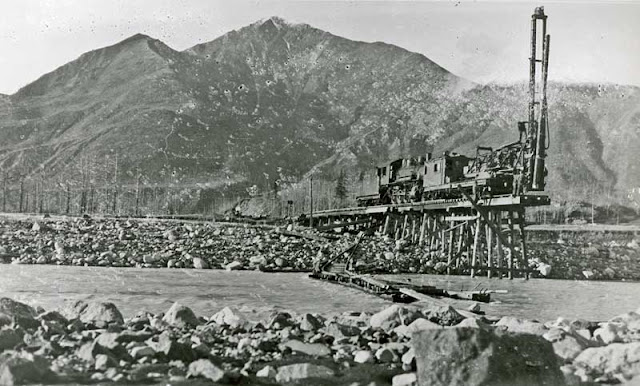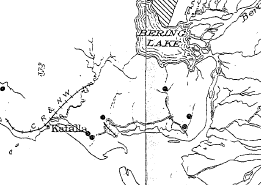The main line headed to Kennicott runs from lower left to top center. A spur runs from behind the depot at center left down to Shoshana Street. The building with the diamond windows at the far lower left along the spur is called the Mother Lode Warehouse. This still stood in the 1950s, and speeder excursions to Kennicott from McCarthy seem to have used it as a starting point:
The engine house is at the upper center. The turntable is at the far right just below the enginehouse. Several other railroad structures appear above the enginehouse. What looks like a mikado is on the spur leading to the turntable.
The spur that led past the Mother Lode Warehouse went farther down along Shoshana Street to the Mother Lode Power plant. This is visible with the stack at the far left of this view:
This building has its own entry on Wikipedia:The McCarthy Power Plant, also known as the Mother Lode Coalition Mining Company Power House and the Mother Lode Plant, is a historic power plant building in the small community of McCarthy, Alaska, in the heart of Wrangell-St. Elias National Park and Preserve. It is a three-story wood frame structure with a clerestory roof, located on the banks of McCarthy Creek. It was built in 1917, after the arrival of the Copper River and Northwestern Railway in the area kicked of a building boom. The coal-fired power plant was built to provide electricity for the operation of a tramway and other facilities of the Kennecott mines. Most of the transmission lines and the tramway were destroyed by avalanches in 1919, and other changes made soon afterward made the power plant unnecessary, and its turbine was moved up to Kennecott.The presence of the stack probably dates the photo to the period 1917-1919. Here is a more recent photo: The building still exists. Here is a plat view of this part of town as it currently exists:
















